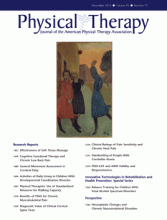Abstract
Background There is no consensus regarding the effectiveness of transcutaneous electrical nerve stimulation (TENS) for management of chronic musculoskeletal pain or chronic low back pain. A recent review of previous trial methodology identified significant problems with low treatment fidelity. There is little information available to guide selection of patient-reported outcome measures appropriate for TENS evaluation.
Objectives The purpose of this study was to explore the experiences of patients at a secondary care pain clinic who successfully used TENS to help manage chronic musculoskeletal pain. These key informants were selected because they had the potential to generate knowledge that could inform research design and clinical practice.
Design A qualitative method using individual semistructured interviews with open questions was selected for its capacity to generate rich data.
Methods A mini focus group informed the development of a discussion guide for semistructured interviews with 9 patients (6 women, 3 men). Thematic analysis was used as the primary data analysis method, and this analysis was enhanced by a case-level analysis of the context and processes of TENS use of each individual.
Results Data analysis indicated that distraction from pain and a reduction in the sensations associated with muscle tension or spasm should be considered as separate outcomes from pain relief. These direct benefits led to a wide range of indirect benefits dependent on patient decision making, including medication reduction, enhanced function, psychological benefits, and enhanced ability to rest.
Conclusions The findings indicate that evaluating TENS using a unidimensional pain scale is likely to overlook potential benefits. The complex pattern of TENS usage, as well as multiple direct and indirect outcomes, indicates that TENS could be considered as a complex intervention.
Footnotes
All authors provided concept/idea/research design. Dr Gladwell, Dr Cramp, Mrs Badlan, and Professor Palmer provided writing. Dr Gladwell provided data collection, participants, and institutional liaisons. All authors provided project management. Mrs Badlan, Dr Cramp, and Professor Palmer provided consultation (including review of manuscript before submission).
The authors thank the patients who took part in the interviews: their knowledge and experience have been invaluable.
- Received March 12, 2014.
- Accepted April 19, 2015.












